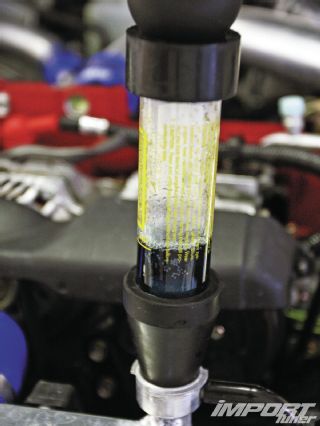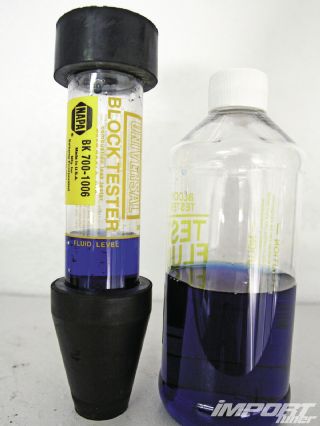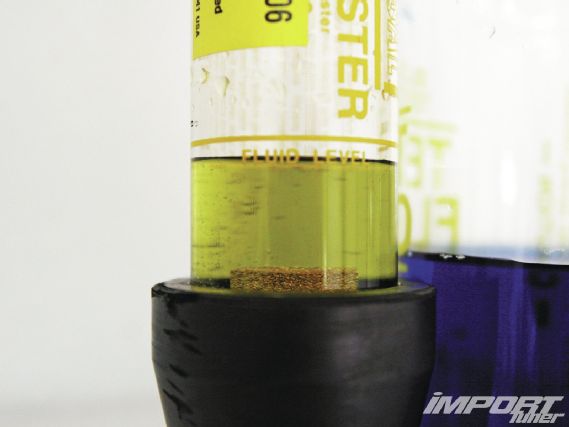When it’s warm outside, we rely on our car’s cooling system to keep temperatures inside the engine under control, but there are times when the cooling system stops working, leaving you stuck on the side of the road while your engine takes a steam bath.
 |
Blown Head Gasket Diagnostic - Tricks Of The Trade
|
Blown Head Gasket Diagnostic - Tricks Of The Trade
Typically, an engine with a head gasket problem shows steam, water, or white smoke exiting the exhaust pipe along with other symptoms like coolant in the oil or vice versa. To pinpoint such problems, we came across an inexpensive diagnostic tool called a block tester, also known as a combustion leak tester. The tester consists of a glass beaker and aspirator bulb that pulls fumes from inside the top of the radiator into the test beaker, passing through a gas-sensitive bromothymol blue chemical. If combustion gas is present in the cooling system, a chemical reaction occurs, turning the fluid from blue to yellow, indicating a combustion leak from a head gasket.
Although the block tester is considered a cheap and simple-to-use device that offers immediate results, we still prefer using a four-gas analyzer (smog sniffer) to test the radiator for traces of hydrocarbons for a truly accurate reading.
Testing Procedure:
 |
Blown Head Gasket Diagnostic - Tricks Of The Trade
|
Blown Head Gasket Diagnostic - Tricks Of The Trade
1. With the radiator cap off, the engine should be warm and allowed to idle during the test. The coolant must be warm and circulating while the test is in progress.
2. Remove the rubber bulb from the test instrument and proceed to pour the test fluid into the instrument to the “fill to here” line. Reinstall the rubber bulb into top plug with the metal valve end up.
3. Either siphon off or drain the coolant so that the level is 2 to 3 inches below the neck of the radiator. This will prevent antifreeze from being drawn into the test instrument, causing a false positive reading. Should coolant contaminate the bromothymol, remove the test instrument and clean the unit before attempting the testing process again.
4. Insert the tester firmly into neck of radiator, so that a seal is formed with the inner neck of the radiator. Squeeze the bulb to draw air from the radiator through the test fluid.
 |
Blown Head Gasket Diagnostic - Tricks Of The Trade
|
Blown Head Gasket Diagnostic - Tricks Of The Trade
5. If the fluid turns yellow, a combustion leak is present. If the fluid remains blue, your engine is healthy and good to go.

